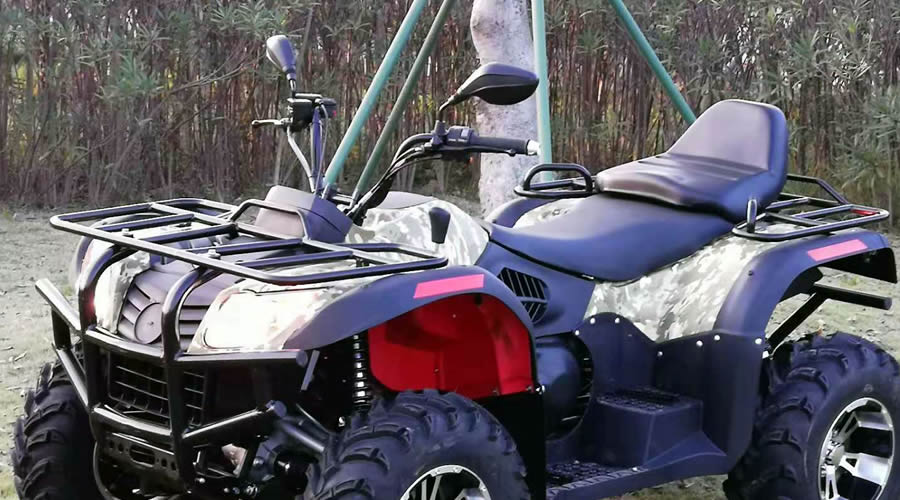UTV & ATV Dealers From 1 Unit
Yes, you read that right, 1 unit is also wholesale price. Whether you are a UTV dealer or a regular customer.
Yes, you read that right, 1 unit is also wholesale price. Whether you are a UTV dealer or a regular customer.

If you’ve got an ATV that’s been sitting for a long time, you’re not alone. Many ATV owners face the challenge of getting their quads back in running condition after periods of inactivity. Whether it’s a Honda Fourtrax, a Polaris, or a Yamaha, this guide will walk you through the steps to revive your ATV and get it running like new. This article is worth reading because it provides practical, step-by-step advice, backed by expert tips and real-world experiences, to help you troubleshoot and fix common issues that arise when an ATV has been sitting idle.
When an ATV sits unused for an extended period, several issues can arise. Condensation can form in the gas tank, leading to rust and clogged fuel lines. The battery may lose its charge, and the carburetor can become gummed up with old fuel. Additionally, spark plugs can corrode, and engine oil can break down, losing its lubricating properties.
Case Study: A Honda Fourtrax owner reported that after letting their ATV sit for over a year, they found rust in the gas tank and a dead battery. By following a systematic approach, they were able to get their ATV running again.
The most common causes of an ATV not starting after sitting include:
Pro Tip: Use a fuel stabilizer like Stabil to prevent fuel degradation if you plan to let your ATV sit for a while.
A dead battery is one of the most common issues with ATVs that have been sitting. Here’s how to check and replace it:
Quote: “A dead battery is often the first thing to check when reviving an ATV that’s been sitting. It’s a simple fix that can save you a lot of time.” – ATV Forum Community
The carburetor is a critical component of your ATV’s fuel system. If it’s clogged, your ATV won’t start. Here’s how to clean it:
Pro Tip: Consider using a rebuild kit if the carburetor is heavily corroded or damaged.
Old gas can cause a host of problems, from clogged fuel lines to poor engine performance. Here’s how to handle it:
Stat: Ethanol-blended gasoline can degrade in as little as 30 days, leading to engine problems.
A fouled spark plug can prevent your ATV from starting. Here’s how to check and replace it:
Pro Tip: Use a starter fluid to test the ignition system. If the ATV starts with the fluid but not without it, the issue is likely fuel-related.
Rust can wreak havoc on your ATV’s fuel system and engine. Here’s how to deal with it:
Case Study: An ATV owner found rust in their gas tank after letting their ATV sit for two years. By cleaning the tank and replacing the fuel lines, they were able to get their ATV running again.
Old oil can lose its lubricating properties, leading to engine damage. Here’s how to change it:
Pro Tip: Use a high-quality synthetic oil for better engine performance and longevity.
Preventative maintenance is key to keeping your ATV in good condition. Here are some tips:
Quote: “An ounce of prevention is worth a pound of cure. Regular maintenance can save you a lot of headaches down the road.” – ATV Owners and Enthusiasts
An ATV can start having issues after sitting for just a few months, especially if the fuel system isn’t properly maintained.
No, old gas can degrade and cause engine problems. It’s best to drain old gas and replace it with fresh fuel.
The worst-case scenario is severe engine damage due to rust, corrosion, or lack of lubrication.
It’s a good idea to start your ATV every few weeks to keep the engine and fuel system in good condition.
Not necessarily. Cleaning the carburetor is often enough, but if it’s heavily corroded, a rebuild or replacement may be necessary.
Store your ATV in a dry place, use a fuel stabilizer, and consider removing the battery to prevent it from losing charge.
For more information on ATVs and UTVs, check out our Electric UTV with Cargo Bed and 6 Seats UTV Side by Side Golf Cart.
By following these steps, you can revive your ATV and get it running like new. Whether you’re an ATV owner, enthusiast, or just someone looking to get their quad back on the trail, this guide has you covered. Come join the discussion on our ATV Forum and share your experiences with other ATV riders!